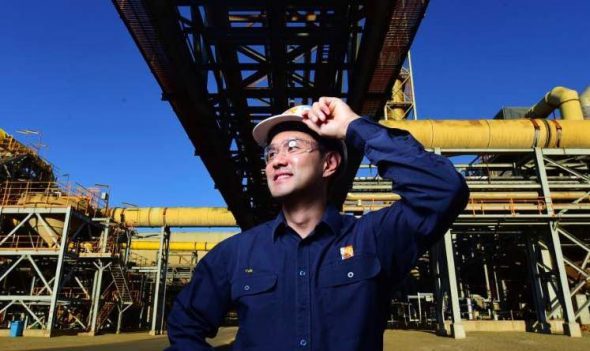Australian zinc metals producer Sun Metals is to build a 100MW solar PV plant to supply its refinery located near Townsville, in northern Queensland, in a landmark development in the Australian renewable energy landscape.
The project marks the biggest intervention yet in Australia by a major energy user to source some of its electricity needs from renewable energy. While major international corporate players – such as Google, Apple, Amazon and others – have long had a 100 per cent renewable energy target, little has been done in Australia.
The decision by Sun Metals to build a 100MW solar farm 15kms south of Townsville – it may be increased in size to 116MW – also flies in the face of widespread political and media rhetoric that adopting renewable energy will be the death of manufacturing in this country.
It also flies in the face of a push by some conservative MPs for a new coal fired power station in the area. Given other projects in region – the Kidston gold/hydro and Windlab’s Kennedy wind/solar/storage projects – there would appear to be no need for new “baseload”, least of all high emitting coal “baseload.”

Indeed, Sun Metals says the $155 million solar project forms a key part of its plans to expand the output of the refinery by 25 per cent. Sun Metals plans to invest $460 million in the upgrade, according to a speech by CEO Yun Birm Choi made in October and reported by the Townsville Bulletin.
The Korean-owned Sun Metals, as a large electricity consumer, has also been pushing for significant regulatory changes to Australia’s wholesale electricity market.
The company has petitioned for a “five minute settlement rule” to be put in place, which would open the door for demand response and battery storage to play a larger role in electricity markets and help address the huge price spikes that are often the result of bidding practices by fossil fuel generators.
Those proposals, although supported by the Australian energy regulator and the market operator, have been fiercely opposed by the owners of coal and gas fired power stations.
Work on the Sun Metals solar project will begin immediately, with construction set to get underway in April. The 100 MW single axis tracking should be completed in Q1 2018 and will feed electricity directly into the company’s existing 33/132kV substation.
WA-based RCR Tomlinson Limited has picked up the EPC contracted for the Sun Metals Solar Farm, with First Solar set to supply it thin-film CdTe modules. The project will create 250 jobs.
“The award of this project reflects RCR’s position as a leader in EPC delivery of large-scale solar farms and follows our successful completion of the 53MW Broken Hill Solar Plant,” said RCR CEO Paul Dalgle in a statement.
That Sun Metals has decided to develop its own large PV array to supply its operations demonstrates that its CEO has a clear understanding of the opportunities distributed generation and storage is presenting not only to the grid but also to industrial electricity consumers.
Corporate PPAs and the direct supply of PV electricity to C&I customers is likely to accelerate in the near future, with high prices for large scale renewable certificates (LGCs) combining with rapidly falling solar module costs.
The ARENA large scale solar program, with the first arrays receiving grants likely to begin construction this year, has assisted in developing a competitive EPC environment. Financing costs too are falling, with international and domestic lenders and investors will to invest in renewable projects at rates that are globally competitive.
(Jonathan Gifford is an Australian journalist specialising in solar and renewable energy on secondment with RenewEconomy).










